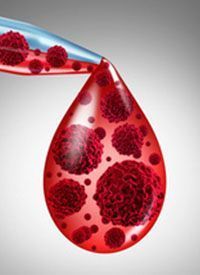Article
Multidisciplinary Team Approach Is Ideal for irAE Management in Follicular Lymphoma
Author(s):
Immune checkpoint inhibitor therapy in relapsed follicular lymphoma can induce immune-related adverse events which can be difficult to diagnose and manage.

Early recognition and treatment of immune-related adverse effects (irAEs) following immune checkpoint inhibitor (ICI) therapy in relapsed follicular lymphoma requires a multidisciplinary approach to assessing symptoms, according to observations from a single-center study presented at the 2022 Pan Pacific Lymphoma Conference.1
Institutions providing a multidisciplinary team, including a primary investigator, attending physician, clinical nurse, advanced practice provider (APP), and research nurse, are uniquely poised to address potential ICI-related toxicities during the clinical trial period. Cross-functional teams promote closer monitoring of signs and symptoms related to irAEs, assessment of a patient’s ability to self-report symptoms, and early and frequent education for patients about what to expect throughout the treatment cycle.
In a retrospective chart review, investigators assessed data from an investigator-initiated, open label, single-center phase 2 study (NCT02446457) conducted at The University of Texas MD Anderson Cancer Center (MD Anderson). The trial enrolled patients with stage I-III, relapsed or refractory follicular lymphoma who were age 18 years or older and had absolute neutrophil counts of at least 1.0 × 109 cells/L, platelet counts of at least 50 × 109 cells/L, and adequate renal, cardiac, and pulmonary function. Although patients needed to have received at least 1 line of prior therapy, prior ICI therapy was ground for exclusion. Other exclusion criteria included a history of autoimmune disease within the past 2 years requiring systemic therapy, history of any other malignancy within the past 5 years, uncontrolled serious illness or comorbidities, or history of HIV, active hepatitis B or C infection.
Enrolled patients received 375 mg/m2 of intravenous rituximab (Rituxan) on days 1, 8, 15, and 22, during cycle 1, and 200 mg of IV pembrolizumab (Keytruda) every 3 weeks for up to 16 cycles, beginning on day 2 of cycle 1. Providers used the National Cancer Institute’s Common Terminology Criteria for Adverse Events (CTCAE), version 4.0 to grade the AEs.
Overall, 30 patients with follicular lymphoma were treated on the study, 80% of whom experienced an irAE in accordance with the terminology criteria. Thirteen percent of patients experienced a grade 3 or 4 irAE, 33% (10 patients) completed 16 cycles without early discontinuation, and 20% (6 patients) discontinued treatment following the manifestation of an irAEs.
The onset time to first irAE ranged from 1 day to 207 days with a median of 35 days. In addition, 5 patients had pre-existing conditions (asthma, diarrhea, rash, hepatitis), which study authors noted could be further analyzed as an irAE risk factor.
The work-up for irAEs in this study included cultures, diagnostics imaging, and biopsies. Providers also referred their patients to other specialties for nuances diagnosis or management of certain irAEs, such as pulmonary medicine, infectious disease, dermatology, gastrointestinal endoscopy, ophthalmology, and endocrinology.
“Providers should pay close attention to signs [and] symptoms of irAEs,” the study authors wrote a poster of the findings. “Providers should consider treatment hold [or] discontinuation of checkpoint inhibitors when concerning irAEs occur.”
Corticosteroids continue to be a mainstay of treatment for various irAEs and higher grade, recurrent, or persistent irAEs may require the use of steroids. Moreover, as certain irAEs may be severe, and unfortunately difficult to diagnose, investigators recommend using the services of gastrointestinal, pulmonary, and infectious disease teams, for diagnostic testing and treatment recommendations. Further, collaboration with dermatology and ophthalmology are advised for skin or eye conditions.
Study authors explained that ICI therapies have been incorporated into the treatment landscapes for several cancer types, including non-Hodgkin lymphoma. However, the mechanism of action with these drugs results in immune system activation and can therefore result in irAEs. Common events include dermatitis, colitis, hepatitis, pneumonitis, and endocrine disorders including thyroid dysfunction. Because irAEs may develop at various timepoints throughout treatment and progress quickly, early detection and intervention is key in providing quality care to patients.
The ICI associated with more irAEs in the study was pembrolizumab, and the most common mitigation strategy was to hold or discontinue pembrolizumab and administering systemic corticosteroids. Following treatment hold, 4 patients were rechallenged with pembrolizumab (median of 28.5 days; range 14-51), but permanently discontinued treatment due to persistent immune-related diarrhea (n = 3) and pneumonitis (n = 1). Another patient was rechallenged with pembrolizumab and successfully completed all 16 cycles without irAE recurrence.
Several patients (n = 7) received corticosteroids to manage their irAEs. The median duration of time on corticosteroids was 125 days (range, 40-319). Three of these patients received topical corticosteroids only for rash, and the remaining were observed until resolution.
Notably, the study authors noted that for a small number of patients, irAEs did not present until after pembrolizumab was permanently discontinued. Nevertheless, all patients included in the study had eventual resolution of their irAEs.
The study authors acknowledged that patients enrolled at MD Anderson clinical trials have multiple avenues to contact a member of their care team, including direct phone calls, emails, texts, to research nurses and APPs, phone call to clinic teams, or emails to clinical teams through an online patient portal. Having multiple lines of communication between a patient and a research nurse/APP may be critical, they observed, as this facilitates effective communication.
“Providers should especially monitor patients for recurrence of irAEs who are undergoing a treatment rechallenge with a checkpoint inhibitor [and] be aware that irAEs can occur even once treatment is permanently discontinued, and continue to monitor for irAEs,” The authors wrote, noting that “multiple irAEs can occur in the same patient at different times.”
Reference
Dsouza S, Nastoupil L, Mims J. Diagnosis and management of immune-related adverse events in follicular lymphoma patients treated with a checkpoint inhibitor. Presented at: 2022 Pan Pacific Lymphoma Conference: July 18-22, 2022; Koloa, Hawaii.








